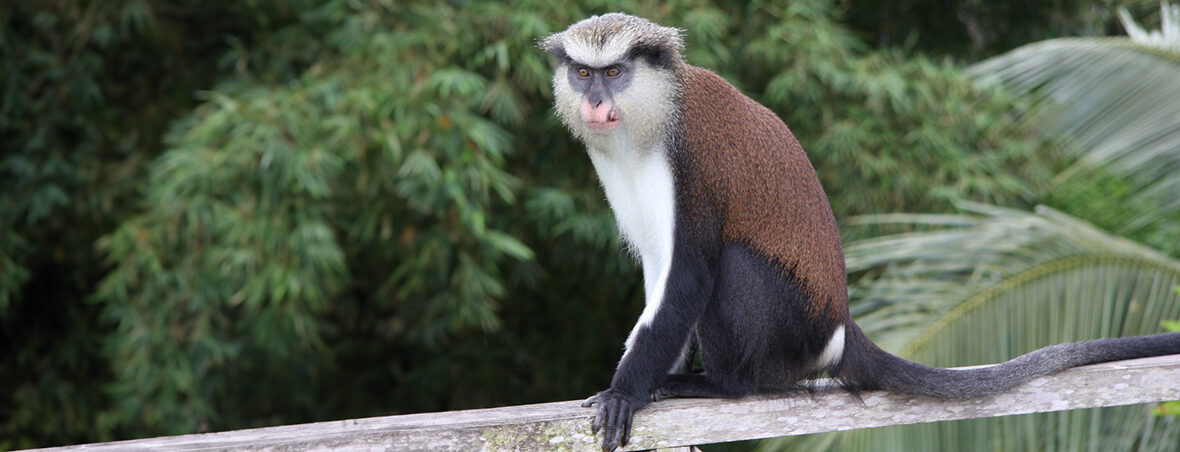
The mona monkey is an Old World (those from Africa & Asia) primate that dwells in western Africa from Ghana, Togo, Benin, Nigeria, & western Cameroon. There are 4 recognized subspecies of these monkeys: the mona monkey, Campbell’s Mona monkey, Lowe’s mona monkey, and the crested mona monkey. Unfortunately, they face the threats of habitat loss and destruction at the hands of residential and commercial developments, logging, mining, and quarrying; hunting; and trapping. The IUCN lists these critters as Near Threatened. Their numbers are also decreasing.
First the Stats…
Scientific name: Cercopithecus mona
Weight: Up to 11 lbs.
Length: Up to 25 inches, plus up to a 29 inch tail
Lifespan: Up to 30 years
Now on to the Facts!
1.) Mona monkeys have buccal cavities (cheek pouches) that are used to temporarily store food.
2.) These omnivores (eat plant and animal matter) feast on fruits, leaves, flowers, seeds, insects, and other invertebrates.
3.) They are diurnal (active during the day).
4.) These primates have also been introduced into Grenada, São Tomé, and Príncipe.
5.) While typically known as a forest species, they are able to adapt to gallery forests in savannah regions, heavily degraded forests, and mangrove forests in the delta region of the Niger River.
But wait, there’s more on the mona monkey!
6.) They gather into troops of up to 12 individuals.
7.) Being arboreal (spend their lives in the trees) these critters move about via brachiation (swinging from branch to branch).
Did you know…?
In Grenada and São Tomé they are considered an invasive species.
8.) Monas have a variety of vocalizations, including a loud and resonating call that sounds like “boom boom krak-oo krak-oo”, which is used to warn others of danger. They are also known for making expressive moans, though the exact reason for these vocalizations is not fully understood.
9.) Mona monkeys have been observed utilizing tools, such as sticks, to extract insects from crevices in trees.
10.) These monkeys have a natural immunity to yellow fever and the Semliki Forest virus.
But wait, there’s still more on the mona monkey!
11.) Females undergo up to a 6 month gestation (pregnancy) that yields a single infant.
12.) The entire troop cares for the infants.
Be sure to share & comment below! Also, check out the Critter Science YouTube channel. Videos added regularly!
Want to suggest a critter for me to write about? Let me know here.
Some source material acquired from: Wikipedia & IUCN
Photo credit: LitCaf



